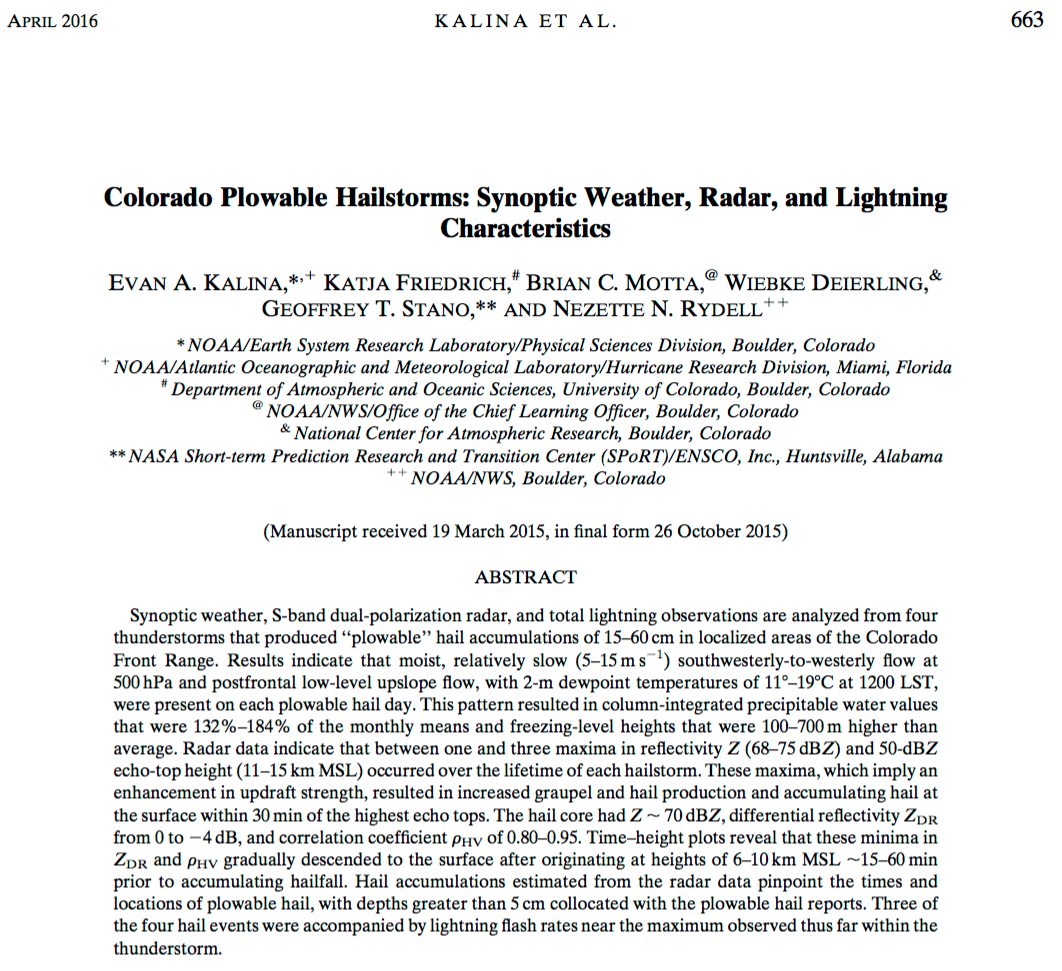
Resumen:
Thunderstorms that result in deep hail on the ground can threaten life and property. Previous such storms in the Denver area caused hail to pile up to two feet deep in 30 minutes and closed roads, damaged aircraft, and required swift water rescues due to flooding from rain and melting hail. Because snowplows and bulldozers are needed to clear hail from roads after these storms, they have been termed “plowable” hailstorms.
We studied four plowable hailstorms that occurred in the Denver metro area from 2012-2014. We looked for similarities in the weather patterns that produced each storm so that forecasters can better predict when plowable hailstorms might happen. We also studied radar and lightning data from each plowable hailstorm so that forecasters can use these measurements to see a plowable hailstorm as it is happening.
Important Conclusions:
1. The four plowable hailstorms occurred in the afternoon after a cold front passed through the Colorado Front Range during the early morning. The atmosphere became unusually moist, the wind direction near the ground blew towards the mountains (that is, upslope), and the wind direction changed greatly with height above the ground.
2. The most promising way to detect whether a storm is producing plowable hail is to use the National Weather Service’s existing weather radar to estimate how much hail is on the ground. The technique is similar to the way that forecasters find out how much rain a certain place has gotten. In all four hailstorms, this method pinpointed the locations where plowable hail was reported.
3. In three of the four hailstorms, the plowable hail occurred when lightning in the storm was more intense than at any time before the deep hail. When combined with the hail depth estimate from the radar, the increase in lightning activity may be another way that forecasters can detect when a storm is producing plowable hail.
The article can be found at http://journals.ametsoc.org/doi/full/10.1175/WAF-D-15-0037.1.